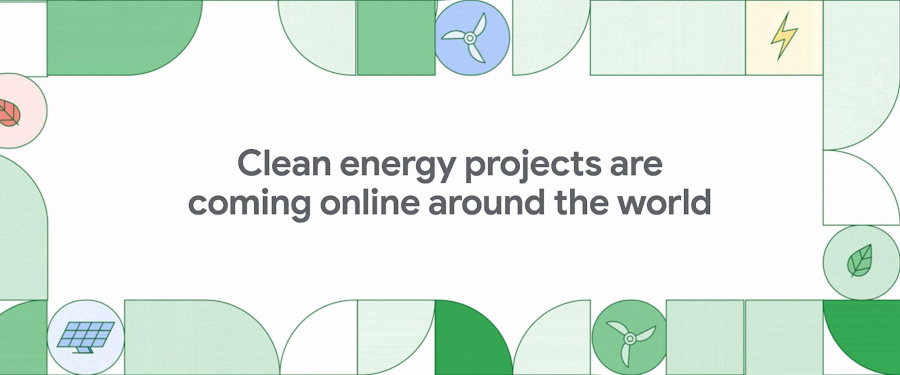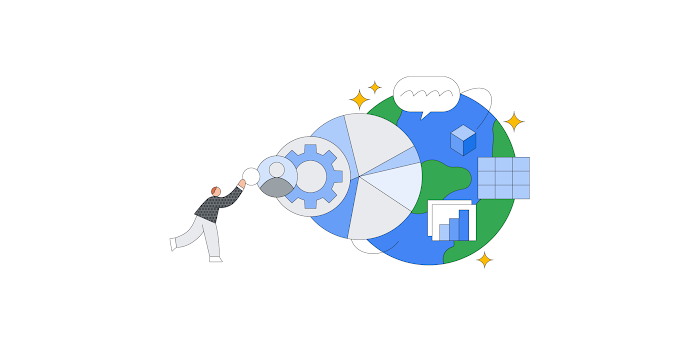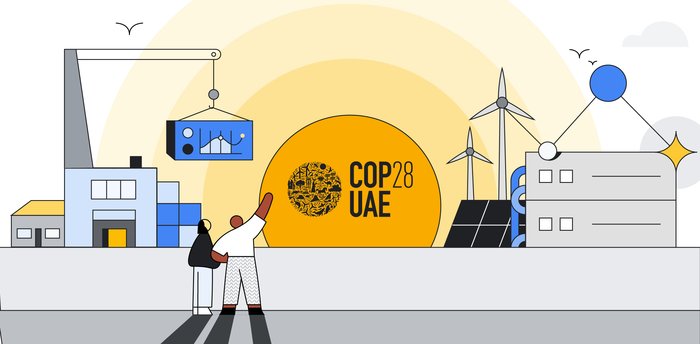Five years of 100% renewable energy – and a look ahead to a 24/7 carbon-free future
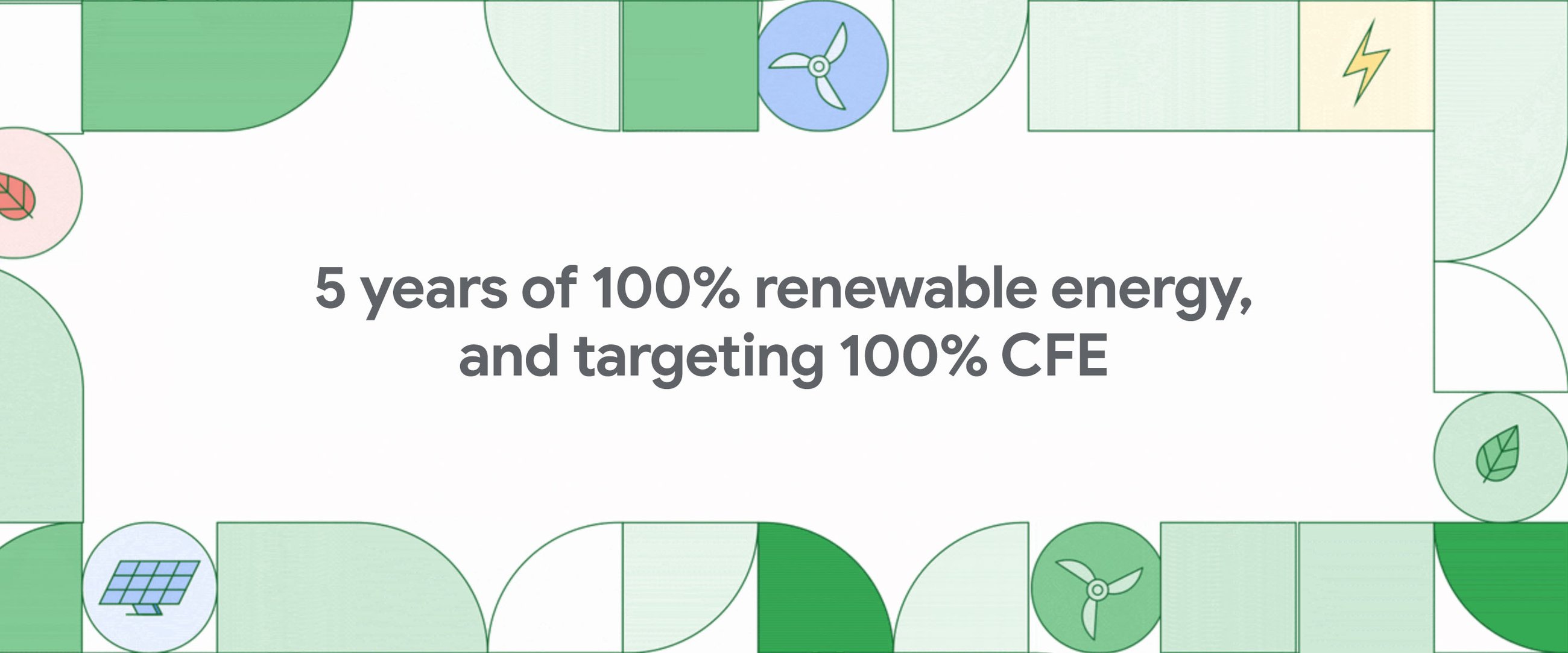
Amanda Peterson Corio
Global Head of Data Center Energy
Google operates the cleanest cloud in the industry, and we have long been a leading champion of clean energy around the world. Since we began purchasing renewable energy in 2010, Google has been responsible for more than 60 new clean energy projects with a combined capacity of over 7 gigawatts — about the same as 20 million solar panels. Our long-term support for clean energy projects has contributed to the rapid growth of the industry, remarkable declines in the cost of solar and wind power, and innovative new contracting models and industry partnerships to accelerate corporate clean energy procurement.
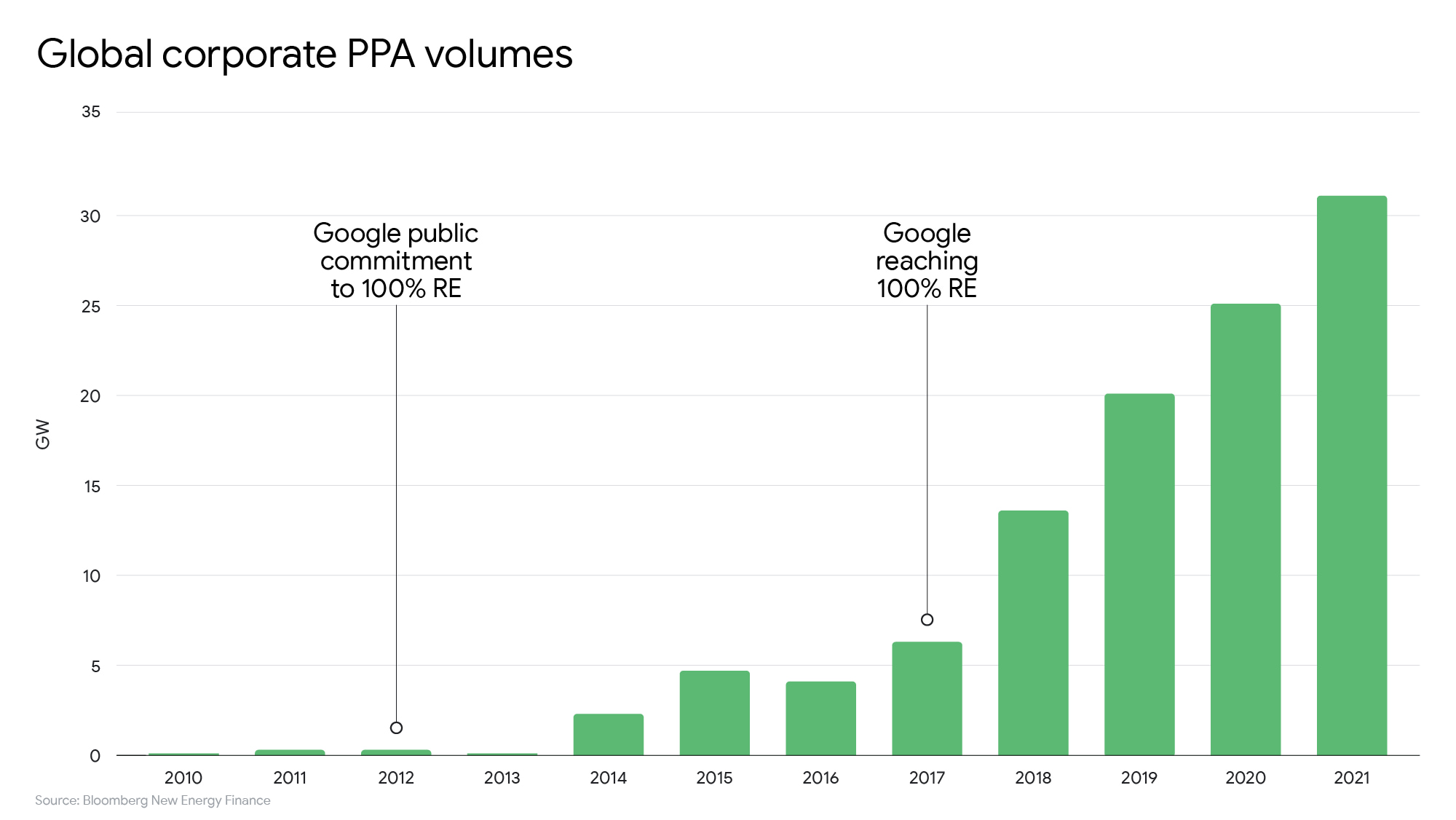

In 2021, we were the only major cloud provider to match 100% of the electricity consumption of our operations with renewable energy purchases – a goal we’ve accomplished for the past five years. This establishes Google Cloud as the cleanest cloud in the industry, and is particularly exciting given the rapid expansion of computing conducted in our data centers over the same period. This required significantly ramping up our global renewable energy purchasing: in 2021 alone we signed agreements to buy power from new renewable energy projects with a combined capacity of nearly 1300 MW – expanding our global portfolio by almost 25%.
A new frontier: 24/7 Carbon-Free Energy
Matching our annual energy consumption with renewable energy purchases has been an important step in our sustainability journey, but there are still regions and times of day where clean energy is unavailable and we are forced to rely on fossil fuels to meet our electricity needs. That is why we are now working towards our moonshot goal of operating on 24/7 carbon-free energy (CFE) by 2030, the last step in our journey to fully decarbonize Google’s global operations.

Operating on 24/7 CFE is a far more complex and technically challenging goal than matching our annual global energy use with renewable energy purchases. It means matching our electricity demand with carbon-free energy supply every hour of every day, in every region where we operate. No company has achieved this before, and there is no playbook for achieving this.
In the spirit of transparency, today we are releasing the 2021 carbon-free energy percentages (CFE%) for each of Google’s data centers. Globally, Google operated at 66%1 CFE in 2021 – 5% higher than 2019, but 1% lower than 2020. We expected this kind of short-term fluctuation: building new clean energy is a multi-year process, and our near-term priority is to build strong foundations for long-term CFE growth.
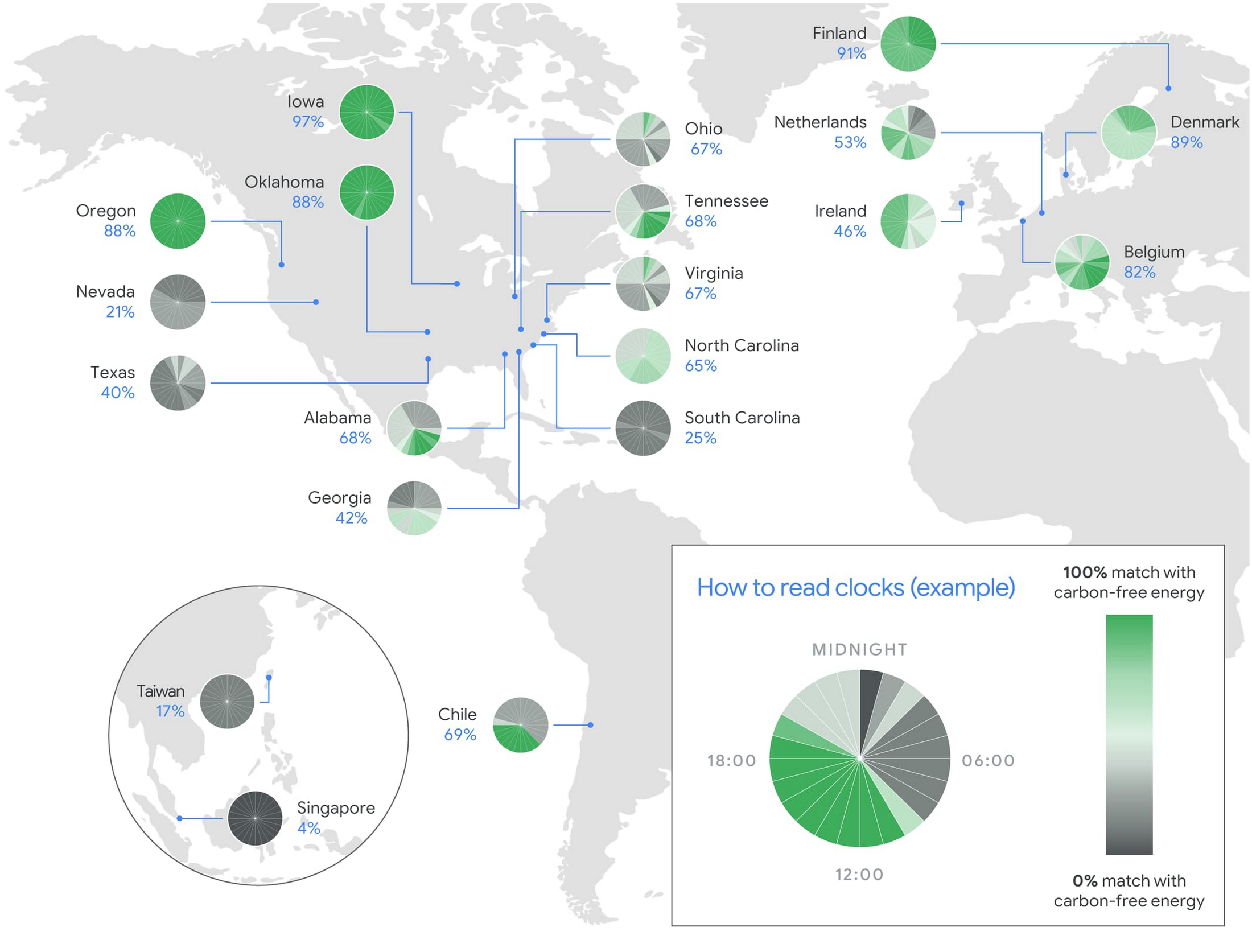

Our largest percentage increases were at our data centers in Chile, at 4%, and Ohio and Virginia, at 4%. In other regions, we encountered significant new headwinds, including a lack of available renewable energy supply and delays to CFE construction due to supply chain disruptions and interconnection challenges. Notably, we also saw flat or declining CFE percentages on the majority of the grids where we operate, underscoring the need for more ambitious action to accelerate grid-level decarbonization everywhere. This is an enormous challenge that requires holistic and long-term solutions, and we are working with our partners across government, industry, and civil society to build a global movement to drive progress at the speed and scale required.
As we work to operate on 24/7 carbon-free energy by 2030, we remain confident in our long-term trajectory and are increasing our focus on regions and times of day where carbon-free energy is not readily available due to resource constraints, policy barriers, or market obstacles. We are building solutions to fill these gaps, including:
New approaches to buying diverse portfolios of carbon-free energy
Projects to advance next-generation technologies like geothermal and batteries
A first-of-its kind carbon-intelligent computing platform to maximize the reduction in grid-level CO2 emissions
Advanced methods for tracking clean energy and maximizing the economic value of clean energy projects
Expanded efforts to advocate for public policies that accelerate grid-level decarbonization
Getting to 24/7 CFE won’t be easy, but we’re optimistic for the future. Our CFE goal is part of our third decade of climate action and company goal of reaching net-zero emissions across our operations and value chain, including our consumer hardware products, by 2030. We aim to reduce the majority of our emissions (versus our 2019 baseline) before 2030, and plan to invest in carbon removal solutions to neutralize our remaining emissions.
We will continue to share our progress and lessons as we work towards our goal, and to work with our partners to accelerate the global transition to a prosperous, carbon-free future.
1. Our carbon-free energy (CFE) percentage measures the degree to which our electricity consumption on a given regional grid is matched with CFE on an hourly basis. This is calculated using both CFE under contract by Google as well as CFE coming from the overall grid mix. CFE coming from the overall grid mix is based on data obtained from a third-party, ElectricityMap, and has not been assured.
